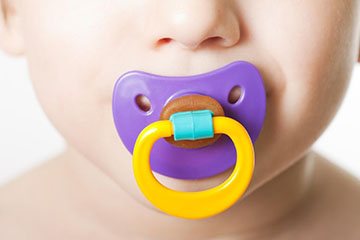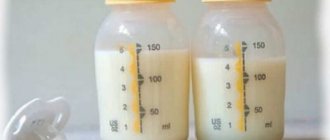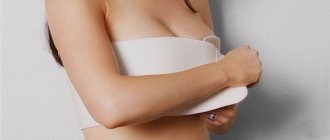Drink plenty of fluids
The importance of this factor can hardly be overestimated. For reference: the volume of food for a child in the first year of life starts at 700 ml (1/5 of body weight), gradually increasing to 1 liter per day. Accordingly, the volume of liquid consumed by a nursing mother should increase by at least 1 liter. At home, you should always have herbal teas in a thermos and boiled water (mineral water, compotes or fruit drinks) available at the same time. Combining drinking hot herbal decoctions with feeding is especially effective: you put the mug on the table and, drinking periodically, put the baby to your breast. A wonderful feeling of tide in the chest is guaranteed!
Herbal teas
Most herbal mixtures contain oregano, anise, fennel, lemon balm, dill, nettle, and wild strawberry leaves. All these herbs have a calming, antispasmodic effect, which has a beneficial effect on the production of oxytocin, one of the two main hormones responsible for lactation. Therefore, in case of stress, overwork, nervous exhaustion, when the production of oxytocin decreases, herbal remedies are absolutely recommended for use. But sage and thyme (thyme) should be treated with caution - they have a depressing effect on the production of breast milk.
You can prepare herbs yourself in advance, buy them at a pharmacy to make a mixture at home, or purchase ready-made herbal teas, including in filter bags.
Preparatory activities
Determine whether you need to increase your milk supply. If the child is calm and happy, then most likely he is full. This will be clear from weight gain in the first months of the baby’s life. If the indicators correspond to the norm, then additional stimulation is not needed. In the case of overfeeding, it is better to slightly limit the duration and frequency of feeding an insatiable baby. This way, the most nutritious hind milk will reach the baby in smaller quantities.
And if there is a lack of weight and problems with the baby’s digestive, endocrine and nervous systems are excluded, then you should think about products that increase lactation. You can determine whether the baby has enough milk before weighing if you use only diapers without diapers for a day. Rare and light urination indicates that the baby is experiencing a lack of nutrition.
There is another testing option, which involves weighing the child before and after feeding throughout the day. The total volume of milk is calculated. The error of this method is that the difference between consumed and digested milk can be significant. One day the baby may eat little, and another day it may eat too much.
There is no clear dependence of lactation on nutrition. Let's take the war years as an example. Did women of those years really have at least 20% of the diet possible in our time? But they only dreamed of “full” rest and a peaceful state. The female body is designed in such a way that it will produce enough milk to its detriment.
Do not rush to switch your baby to mixed or artificial feeding, or introduce complementary foods ahead of schedule. If the child begins to breastfeed less often, then the process of establishing breastfeeding will not start, even though you try all the products that increase lactation. Do not try to feed your baby expressed milk. He will get used to more accessible food and refuse to get it from your chest on his own. Choose comfortable bras that support but do not compress your breasts.
We improve our mood by receiving positive emotions and get more rest. Stress and depressed mood block the production of oxytocin, which affects milk production. It turns out that there is a lot of milk, but the child is not able to get it. Milk production is influenced by a hormone called prolactin, which is produced from mid-night to early morning.
During this time, it is especially important to breastfeed your baby. This way the brain will receive a signal that there is a good demand for milk. This is a kind of ordering a portion for the coming day.
Products that increase lactation
Lactation is a very energy-intensive process. Before you start introducing complementary foods, you feel like a little dairy farm. And nutrition during feeding should be balanced - taking into account not only losses in breast milk, but also energy spent on its creation in the mammary gland. Therefore, during breastfeeding, not only the volume of food increases (mainly due to liquid), but also its calorie content. But not at the expense of cakes and pastries! A sufficient amount of protein-containing foods will ensure adequate lactation with good quality milk. Lean meats, fish (no more than 2 times a week), cottage cheese, cheese, fermented milk products, eggs must be included in the diet of a nursing woman. Hot soups and broths made from lean veal, chicken, turkey, and rabbit stimulate lactation especially well. They should be on the menu every day.
But alcohol, including the legendary beer, as a means of increasing milk production, is absolutely prohibited. When using beer, including with sour cream, the main effect is calming and relaxing, which has a positive effect on the production of oxytocin. Herbal remedies have the same effect, and the consequences of alcohol exposure on a child’s body can be catastrophic. But you can use brewer's yeast as a source of B vitamins.
Any new product should be introduced with caution, observing the child's reaction to it for 2-3 days. And one of the main indicators is the nature of the stool. For a healthy baby in the first month of life, the norm is to pass stool after each feeding. And here Huggies® Elite Soft diapers for newborns can be your assistant, which have a unique Soft Absorb layer that absorbs loose stool and moisture in seconds. And for even more softness, the new Huggies® Elite Soft contain 100% organic cotton. The elastic waistband of the diapers fits perfectly to the baby's body, and a special pocket for loose stool will provide additional protection against leakage. Enjoy!
The milk has arrived. The chest is “full” and hurts. Correct actions of mother
When milk comes in (on days 3-5), the breasts become fuller not only due to a sharp increase in milk volume, but also due to the influx of additional blood and fluid that is needed to prepare the breasts for feeding. The degree of breast enlargement depends on the woman: for some, the breasts change in size very little, and for others, they swell very much. As a rule, swelling subsides within 12-48 hours.
What can a mother do to alleviate this condition?
I Procedure if the breast is very full, but the areola (the dark area around the nipple) is soft, the baby attaches well to the breast, and milk flows out easily.
1. Make sure your baby is latching well and actually sucking milk.
2. The main measure to prevent or reduce swelling of the mammary glands: from the first hours, feed as often as possible. Put the baby to the breast at least 12 times a day, do not limit the time spent at the breast. Feed every time the baby shows signs of being ready to suck or on your own initiative if more than 2 hours have passed since the end of feeding.
How do you know when it's time to offer your breasts?
Crying is the baby’s last “argument”. You can understand that a newborn is asking for the breast long before he starts crying. Here are the signs that almost certainly mean it's time to breastfeed.
- Rapid eye movement, trembling of closed eyes.
- Muscle tension, clenched fists.
- Attempts to cling to everything that can be reached (hands, the edge of the diaper, clothes).
- Restless “searching” turns of the head, opening of the mouth, smacking.
Myth. Never wake a sleeping child.
In fact. Everything is not so clear. This statement may be true for a full-term, absolutely healthy baby born naturally without the use of any medications, incl. pain relief. Or for an older child. If the birth took place with complications and/or the use of medications, or the baby is premature, or low birth weight, or there are even minimal problems with well-being, then in this way (by very long sleep) the body tries to save energy. But in order for these same forces to exist and the body to become strong, it needs nutrition. Therefore, in the first weeks of life, if a child sleeps for more than 2.5-3 hours without waking up, it is better to carefully wake up the baby and offer the breast... or even better, offer it to the sleeping baby by running the breast along the upper lip or expressing a few drops of milk onto the lips to kid. The sucking reflex works great in sleep too :-).
3. Don't limit yourself to drinking. Research shows that fluid restriction is not an effective means of reducing breast swelling due to milk supply.
4. Light breast massage before breastfeeding or during feeding.
Gently, very lightly stroke the breasts. You can very easily tap with your fingertips, move your fingers “like lotto barrels in a bag.” While sucking, you can easily stroke the breast in the direction of the nipple, as if pushing the milk (“without fanaticism”, this can be just light stroking and tapping periodically, there is no need to “rub” the skin of the breast until it turns red).
IMPORTANT! Under no circumstances should you press hard, crush, or “break” the seals: these actions have nothing to do with the flow of milk from the breast! Overstretched breast tissue is very easy to injure, which can easily lead to inflammatory processes. Any actions with the breasts should not hurt!
5. Cold compresses after feeding to reduce soreness and swelling.
Cold compresses can be applied between feedings to reduce pain and swelling. Cold compresses cause the blood vessels to constrict, thereby reducing swelling in the breasts. A towel or diaper soaked in cold water will do just fine.
6. A slight excess of milk is normal immediately after milk comes in. The mother's body adapts to the needs of a particular child and, just in case, produces milk with a small reserve. With on-demand feeding and efficient breast emptying, everything will quickly return to normal, and there will be exactly as much milk as the baby needs. However, if the child, despite all the actions of the mother described above, for some reason cannot suck out enough milk so that the mother does not feel severe discomfort from filling, there is no need to endure “until the last.” Express a little milk, just enough so that the discomfort goes away, but your breasts remain fairly full. And ask a specialist knowledgeable in breastfeeding issues to help you understand the situation.
II Procedure if the breast is so full that it is physically difficult for the child to grasp it deeply and start sucking. The nipple and areola are hard, swollen, the nipple may even be a little “flattened” due to strong filling. Milk does NOT leak from the breast.
IMPORTANT! In this case, “brutal” pumping, which is still so popular in some maternity hospitals, is even more dangerous. Imagine a balloon filled with water and tied tightly. A tied tip is a swollen areola. In order for the water to flow out of the ball, you need to untie it (relieve swelling). It’s not hard to guess what will happen if you start crushing and twisting a tied ball with all your might, trying to get water out of it...
1. In this case, the main task is to achieve milk release from the breast. This is hampered by severe swelling, which is what needs to be dealt with. In this case, the technique of softening the areola with pressure, described by D. Cotterman, can be very effective.
Immediately before each application of the baby to the breast, you need to apply even and gentle pressure on the areola towards the chest and hold the pressure for at least a full minute, or even longer (2-3 minutes, repeating as necessary). You need to focus on the areola where the nipple joins it.
As a result of this action, the excess intercellular fluid is temporarily squeezed inward, in the direction of the natural outflow of lymph, some of the milk is also shifted back into the deeper ducts, the elasticity of the nipple-areola complex increases, and as a result the child can take it deeper into the mouth.
A detailed description of the method is here.
It is very important to continue pressing for at least one minute (measured by a watch), even if the areola seems to become softer a few seconds after you start.
For greater effect, lean back or lie on your back (you should be comfortable!), You can place a small cushion under your shoulder blades to further lift your chest.
Before starting to apply pressure, you can VERY lightly and carefully stroke the breast several times in the direction from the nipple to the periphery, to the axillary region, further helping the outflow of excess fluid.
Next, IMMEDIATELY put the baby to the breast.
2. When milk flow is difficult, it is very important to relax as much as possible. Yes, it is extremely difficult in such a situation, but the calmer and more relaxed the mother is, the easier it is for milk to flow from the breast (no mysticism, just the work of hormones :-)). Ask someone to give you a light massage of the collar area, turn on quiet, calm music, remember something very good, dream, take a shower, drink your favorite warm drink. Any thoughts and actions that help you relax and “let go” of the situation will be good!
After the milk has begun to separate, we continue to follow the plan described above.
If for some reason the baby is unable to breastfeed effectively, or there is so much milk that the baby is physically unable to handle the volume, additional pumping may (temporarily!) be required. In this situation, everything is very individual, contact a lactation consultant for help!
When you urgently need help
- there is no improvement in breast condition at all within 1-2 days, despite all the measures described above,
- red/very painful/swollen breasts or both breasts, chills, flu-like condition,
- temperature above 38°C.
Contact a lactation consultant or healthcare provider.
Melnikova Rada, breastfeeding consultant
www.gv-consult.ru
Sources:
1. Materials of the training course for breastfeeding consultants under the WHO/UNICEF “Progv” program https://progv.ru/
2. “My milk has arrived. The chest is swollen and hurts. What to do?" https://www.llli.org/russian/faq/engorgement.html
3. D. Cotterman “Pressure softening - preparing the breast for the attachment of a baby during engorgement” https://breastfed.info/rps/
Vitamins and medications that increase lactation
During lactation, a woman’s body’s need for vitamins and microelements increases. The resulting relative hypovitaminosis can contribute to a decrease in breast function. Preference is given to multivitamin complexes containing retinol (vitamin A), tocopherol (vitamin E), thiamine (vitamin B1), ascorbic acid, microdoses of iodine, glutamic and lipoic acid. Among the biogenic stimulants, Apilak and Laktogon are used.
Considering that almost all medications pass into breast milk and, accordingly, into the baby, medications to increase lactation should be used only as prescribed by a doctor.
Other ways to stimulate prolactin production. Lactation crisis
It should be noted that breast milk production is a cyclical process. There is a concept of lactation crises that occur every 1.5–2 months, when a woman’s milk supply may decrease slightly. In this situation, the most important thing is not to reduce the number of feedings, but, on the contrary, to put the baby to the breast a little more often. This stimulates milk production. And the child, as a rule, feels the approach of a lactation crisis and “stocks up” on food in advance, increasing his appetite a day or two before the start of a decline in lactation. You cannot refuse night feedings. Maximum production of prolactin occurs at night, and with proper stimulation by breastfeeding, lactation is easily restored.
These simple rules will allow you to give your baby the best gift - feeding with mother's milk. Feed for your health!
Read us on Yandex Zen
Refusal of pacifiers and bottles

Another important condition for establishing lactation is avoiding pacifiers and pacifiers.
Experience shows that the use of bottles interferes with breastfeeding. The fact is that the child gets used to the nipples.
From them, liquid flows more freely. After the bottle, he no longer wants to make an effort and pull out his mother’s nipple to get milk. As a result, the baby refuses to take the breast, turns away and screams.
If there is a need to supplement the baby's feeding or give him other food products, it is best to use a special spoon. Bottles can be used for feeding only after breastfeeding has been fully established. In the first days and weeks of a little person's life, he needs to be breastfed only.










